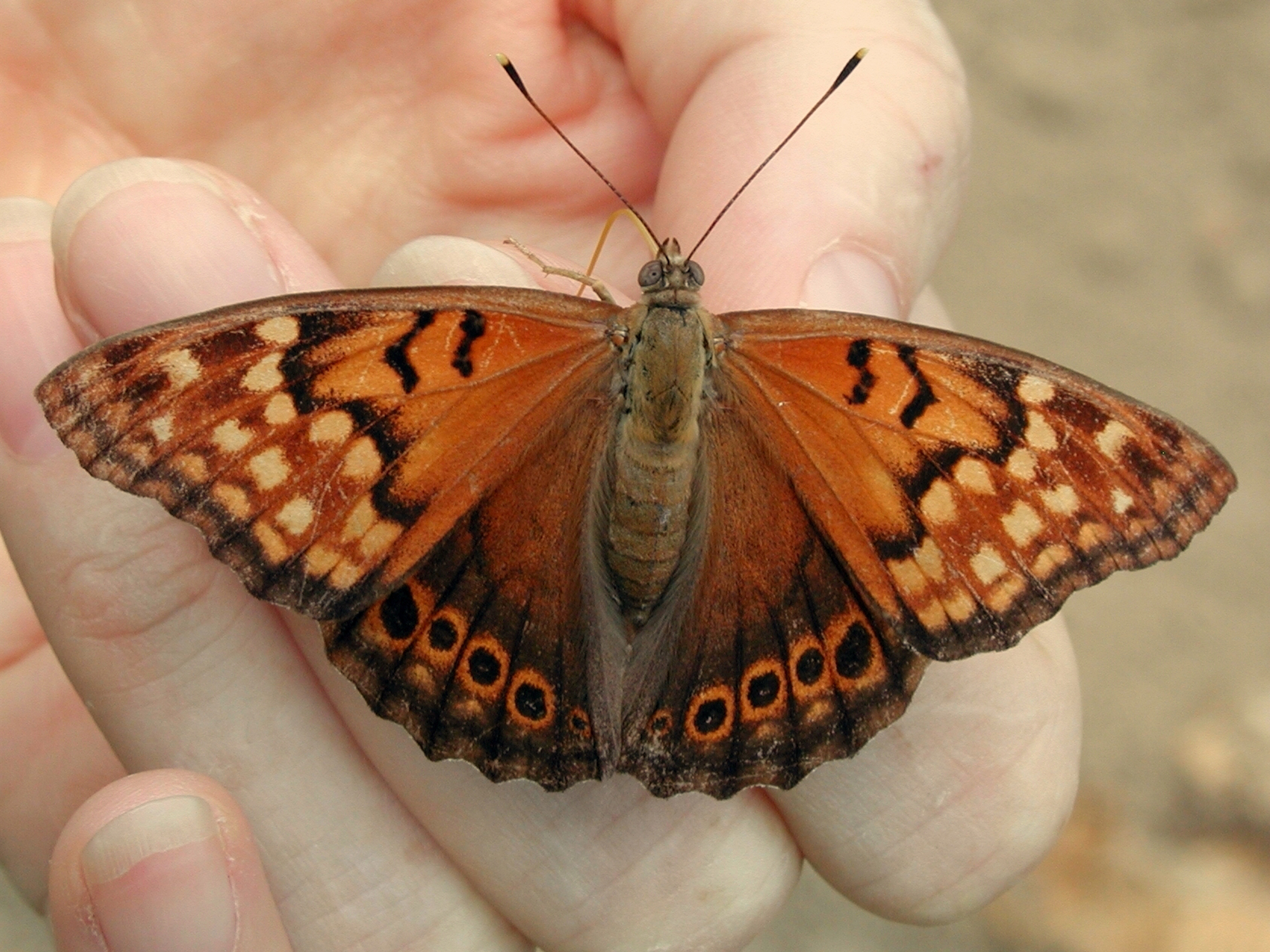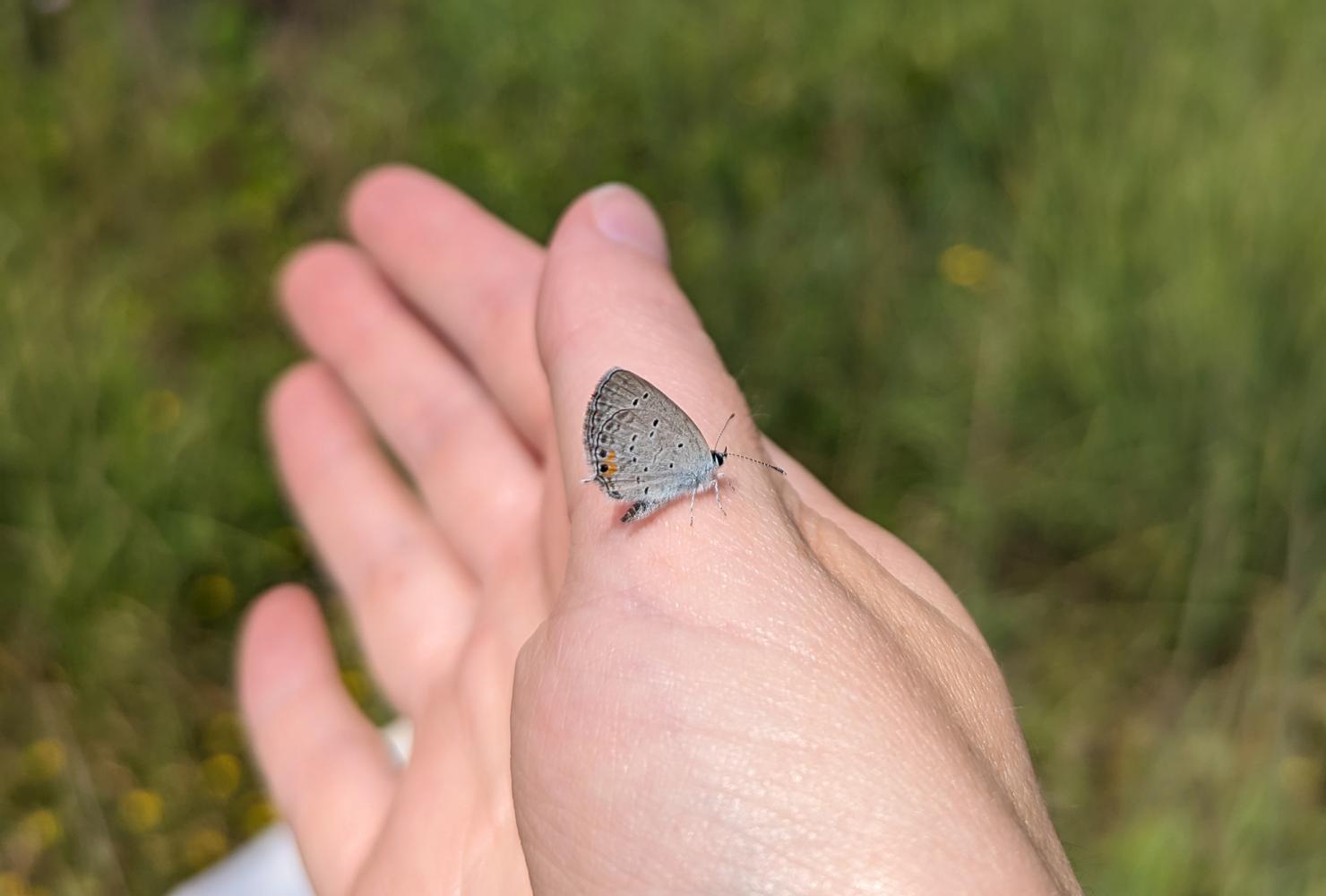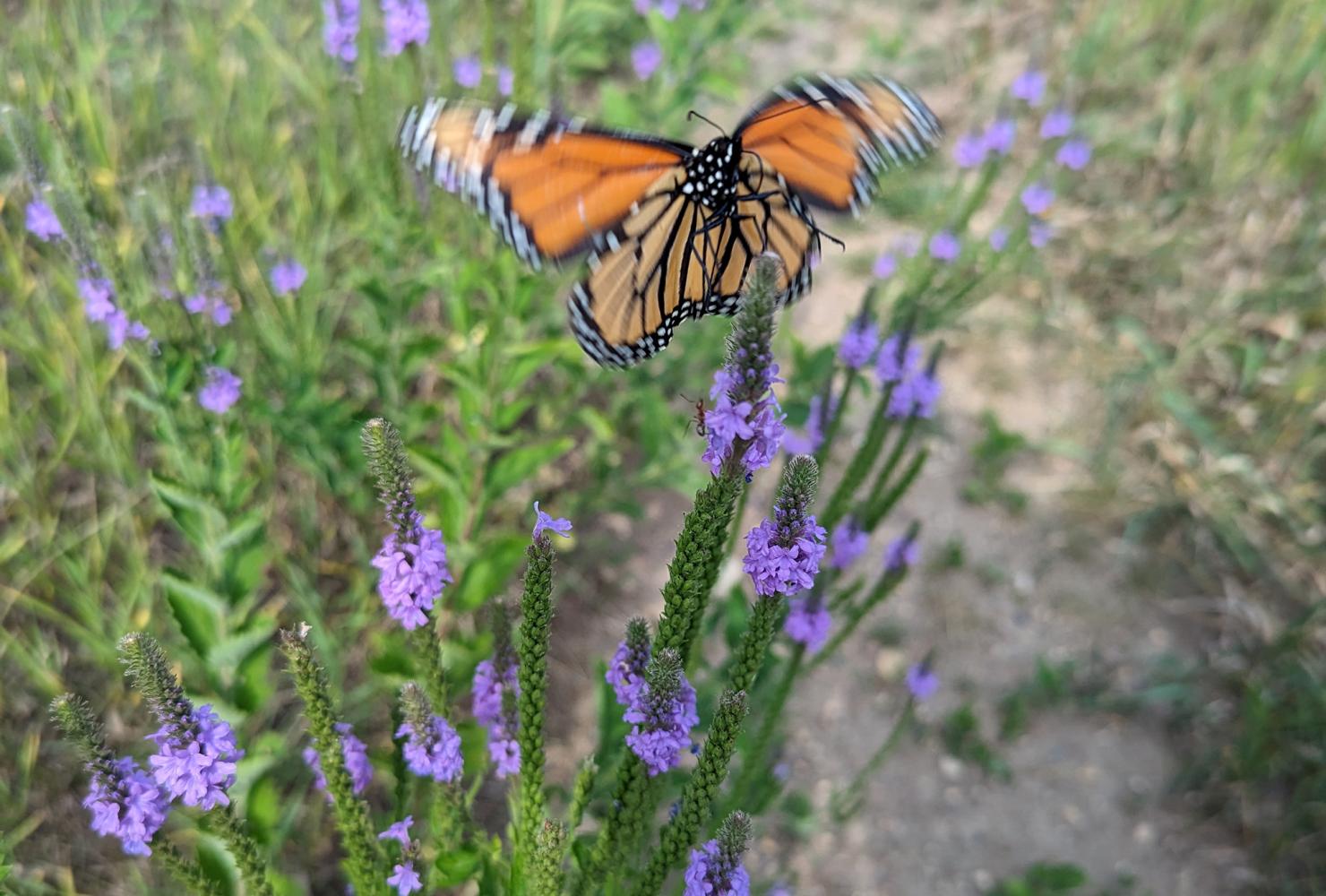Nectar and ... blood? A surprising source of nutrients for butterflies

Butterflies like this tawny emperor sometimes find nutrients in blood, sweat and tears. (Photo by Anita Gould)
When you think about insects that drink blood, chances are you picture mosquitoes or flies — something that stings or bites. But butterflies also drink blood!
I first witnessed this phenomenon in 2016, while surveying butterflies for my graduate research in western Minnesota on a prairie grazed by cattle. I came across a dead cow covered in dozens of clouded sulfur butterflies with their proboscises out (the long straw-like mouthparts through which butterflies feed), lapping up the blood.
Why butterflies sometimes drink blood
It's not just sulfur butterflies that will drink blood given the chance — I've since learned that many different species of butterflies do this.
Rest assured, butterflies are opportunistic blood feeders and don't have the piercing or biting mouthparts of a fly or mosquito. Butterflies won't bite you to drink your blood and they don't harm live creatures through this behavior. They're just taking advantage of whatever food resources happen to be easily available in the environment.
This general behavior is known as "puddling." During puddling, butterflies, and other insects such as sweat bees and planthoppers, land on wet soil, feces, sweat, tears and carrion to feed on minerals and nutrients. Blood, for example, contains sodium and glucose — essential components in the diets of most butterflies, found to increase successful reproduction in some species.
If you've ever noticed a butterfly perched on the corner of an animal’s eye or resting on your arm on a hot summer day, chances are they're lapping up some nutritious tears and sweat.

Tiger swallowtails puddle on the banks of a river, sipping water. (Photo by Bobbie Halchishak/USFWS)
Native flowers preferred — if butterflies can find them
Of course, most adult butterflies in Minnesota rely primarily on nectar for their food. Nectar provides the sugars necessary to fuel flight, mating and reproduction.
Unfortunately, many areas that once supported diverse wildflower populations have been developed or degraded. This is one reason we focus so much on habitat restoration at FMR.
Native prairie, the primary habitat for many of Minnesota’s native butterfly species, is especially imperiled in Minnesota and throughout the Midwest; we have less than 1% of the native prairie that covered the state as recently as the mid-1800s. Restoring native prairie helps provide the nectar and host plant resources necessary to support robust populations of our native butterflies.
FMR habitat restoration and research
This year, FMR added a pollinator biologist role to its land conservation team. I came on board in the spring to help check the effectiveness of our restoration efforts to support pollinators. Together with volunteers and other staff, I'll continue tracking trends in pollinator abundance and diversity across multiple sites and years.
This summer, I monitored pollinators at five of FMR’s restoration sites from June through September. Here are a few of the butterflies I documented:
The data we collect help us understand how pollinators are using the resources in our restoration sites and identify where we may have gaps. For example, it's important to provide nectar sources that are available throughout the growing season and align with the life cycles of native butterfly species.
You might be familiar with the life cycle and annual migration of the monarch butterfly, which spends several generations in Minnesota during the summer and migrates south to Mexico in the fall to overwinter among the oyamel fir trees, before returning north the following spring. Adult monarchs are present in Minnesota throughout the summer and require nectar throughout the season.
Many of our native non-migratory butterflies, however, have only one or two generations per summer and spend only a few weeks of the year as adults. Without nectar sources available to these butterflies during the few weeks they spend as adults, they would not have the energy to mate and reproduce the next generation — unless they happen to come across a good source of blood, sweat or tears!
Help support butterflies and their habitats in Minnesota
Check out our article on why insects matter and what you can do about their decline. Sign up for our e-newsletter, Mississippi Messages, to get updates on our latest research. And if you want to help us restore habitat for butterflies and other pollinators, join us as a volunteer.



